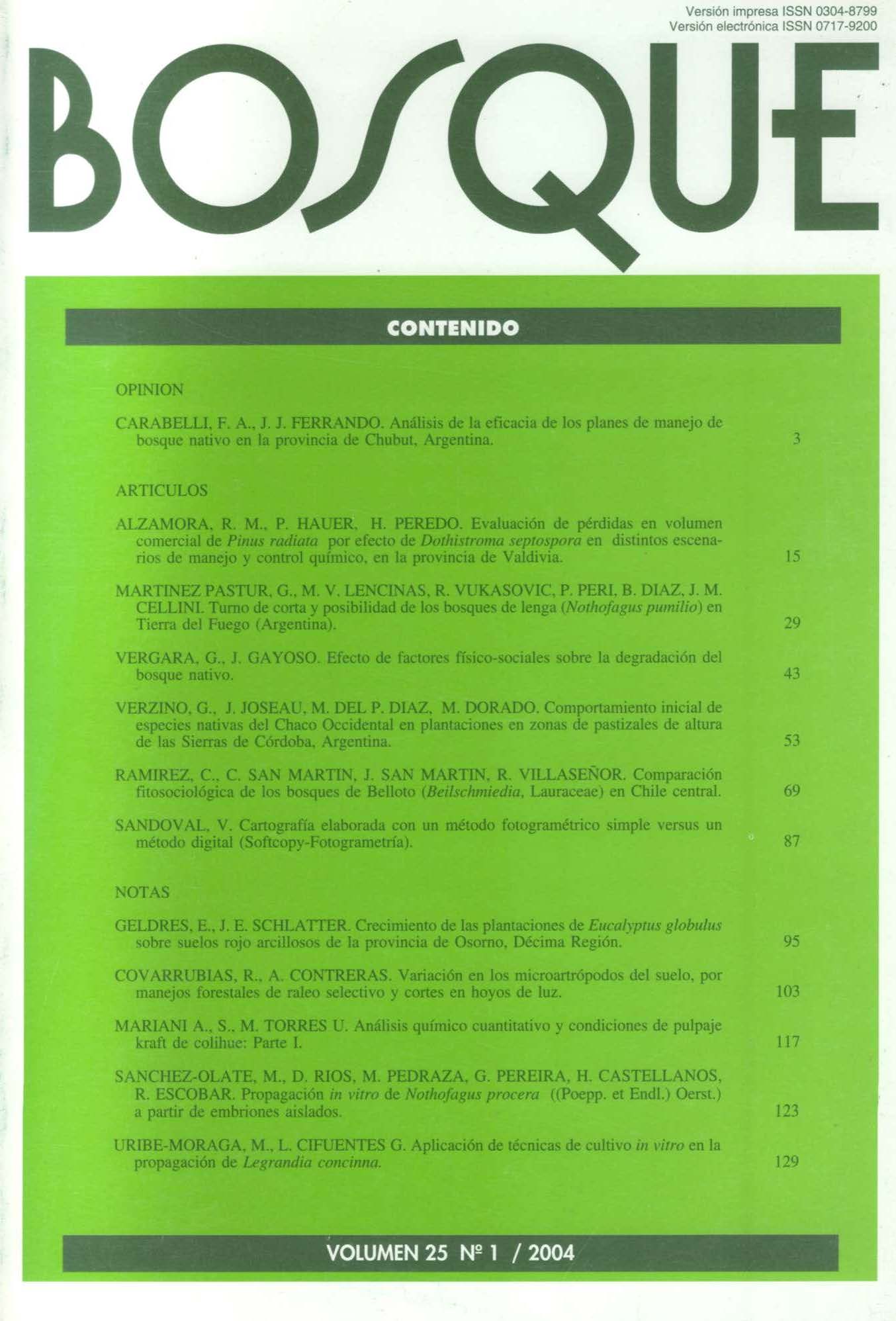Main Article Content
Apr 30, 2004
Abstract
In some sites in the Sierras de Córdoba, the environmental impact of human activity is of such magnitude that natural resource restoration requires afforestation or reforestation measures using native species. The objectives of this study were to evaluate the performance of six Western Chaco native forest species in experimental plantations in high-elevation grasslands in the Córdoba Range, and to identify the best species for the area. Survival and plant height were evaluated in relation to aspect, relative position on the hillside and planting time, in eight experimental plantations which included the following species: Lithraea ternifolia (Gillies) Barkley, Schinopsis haenkeana Engler, Celtis tala Gill. Ex Planchon, Schinus areira L., Prosopis alba Griseb and Prosopis nigra (Griseb) Hieron. The plants’ general situation in terms of spatial relationships with other vegetation on the site was also studied. The environmental conditions of the area were adverse for the species’ survival and height growth, with the exception of L. ternifolia. The plants showed better survival and general condition when protection was provided by existing vegetation. The most appropriate planting time was spring. Northerly and westerly aspects were most conducive to the species’ survival, while the highest height growth was registered for the species Lithraea ternifolia, in the southerly aspect.


